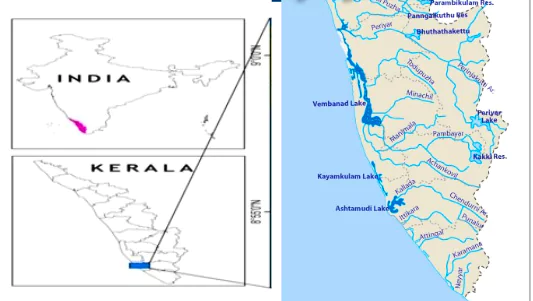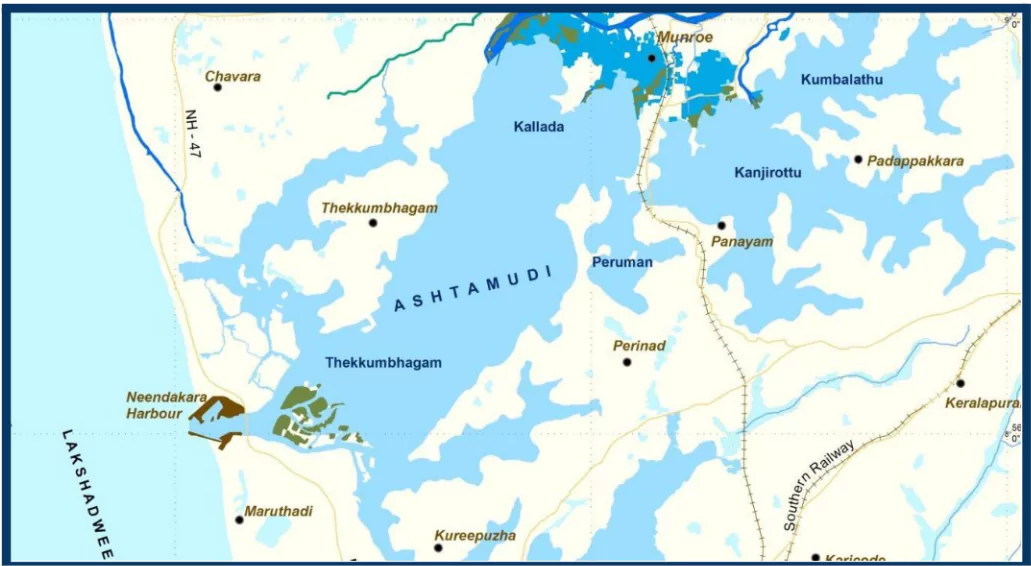Recently, the State Level Monitoring Committee (SLMC), Kerala, constituted by the National Green Tribunal (NGT), submitted a report addressing the pollution of Ashtamudi Lake.
- The report follows investigations into the mass fish kill reported in Ashtamudi Lake.
Key Insights and Recommendations in the report

- Key Findings on Pollution: Excessive algae bloom caused by illegal discharge of biowaste, including faecal sludge and septage, has severely degraded the lake’s environment and aquatic biodiversity.
- Time-Bound Remedial Measures: Urgent implementation of ongoing projects to curb biowaste discharge, ensuring immediate environmental protection.
- Sewage Treatment Plant Completion: Kureepuzha plant construction must be expedited to tackle Kollam district’s septage waste issue effectively.
- Enhanced Monitoring Mechanisms: Recommended to install CCTV cameras for shoreline surveillance and mandate registration of septage tanker lorries to prevent illegal waste dumping.
- Significance for Conservation: Recommendations aim to restore ecological balance in Ashtamudi Lake, setting a national model for Ramsar site conservation and integrated wetland management.
Check Out UPSC Modules From PW Store
About Ashtamudi lake

- Location: Ashtamudi Lake is situated in the Kollam district of Kerala, India.
- It is named for its eight interconnected arms, which give it a unique palm-shaped appearance.
- As the second-largest lake in Kerala, Ashtamudi Lake is a significant wetland ecosystem.
- Recognized for its ecological importance, it was designated as a Ramsar Wetland of International Importance in 2002.
- The lake is a vital source of livelihood for local fishermen, who rely on its rich aquatic resources.
- Fed primarily by the Kallada River, the lake connects to the Arabian Sea through the Neendakara estuary.
- Historically, Ashtamudi Lake played a crucial role as a key port city during the 14th century.
- The Moroccan explorer Ibn Battuta’s travel records mention the lake’s significance as a trading hub.
- The lake’s diverse ecosystem supports a variety of mangrove species, including two endangered species: Syzygium travancoricum and Calamus rotang.
Additional Reading: Algae Boom, NGT. Three More Ramsar Wetland Sites Now In India
![]() 9 Dec 2024
9 Dec 2024



